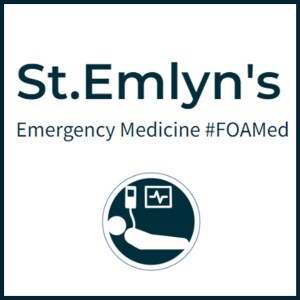
- Podcast Features
-
Monetization
-
Ads Marketplace
Join Ads Marketplace to earn through podcast sponsorships.
-
PodAds
Manage your ads with dynamic ad insertion capability.
-
Apple Podcasts Subscriptions Integration
Monetize with Apple Podcasts Subscriptions via Podbean.
-
Live Streaming
Earn rewards and recurring income from Fan Club membership.
-
Ads Marketplace
- Podbean App
-
Help and Support
-
Help Center
Get the answers and support you need.
-
Podbean Academy
Resources and guides to launch, grow, and monetize podcast.
-
Podbean Blog
Stay updated with the latest podcasting tips and trends.
-
What’s New
Check out our newest and recently released features!
-
Podcasting Smarter
Podcast interviews, best practices, and helpful tips.
-
Help Center
-
Popular Topics
-
How to Start a Podcast
The step-by-step guide to start your own podcast.
-
How to Start a Live Podcast
Create the best live podcast and engage your audience.
-
How to Monetize a Podcast
Tips on making the decision to monetize your podcast.
-
How to Promote Your Podcast
The best ways to get more eyes and ears on your podcast.
-
Podcast Advertising 101
Everything you need to know about podcast advertising.
-
Mobile Podcast Recording Guide
The ultimate guide to recording a podcast on your phone.
-
How to Use Group Recording
Steps to set up and use group recording in the Podbean app.
-
How to Start a Podcast
-
Podcasting
- Podcast Features
-
Monetization
-
Ads Marketplace
Join Ads Marketplace to earn through podcast sponsorships.
-
PodAds
Manage your ads with dynamic ad insertion capability.
-
Apple Podcasts Subscriptions Integration
Monetize with Apple Podcasts Subscriptions via Podbean.
-
Live Streaming
Earn rewards and recurring income from Fan Club membership.
-
Ads Marketplace
- Podbean App
- Advertisers
- Enterprise
- Pricing
-
Resources
-
Help and Support
-
Help Center
Get the answers and support you need.
-
Podbean Academy
Resources and guides to launch, grow, and monetize podcast.
-
Podbean Blog
Stay updated with the latest podcasting tips and trends.
-
What’s New
Check out our newest and recently released features!
-
Podcasting Smarter
Podcast interviews, best practices, and helpful tips.
-
Help Center
-
Popular Topics
-
How to Start a Podcast
The step-by-step guide to start your own podcast.
-
How to Start a Live Podcast
Create the best live podcast and engage your audience.
-
How to Monetize a Podcast
Tips on making the decision to monetize your podcast.
-
How to Promote Your Podcast
The best ways to get more eyes and ears on your podcast.
-
Podcast Advertising 101
Everything you need to know about podcast advertising.
-
Mobile Podcast Recording Guide
The ultimate guide to recording a podcast on your phone.
-
How to Use Group Recording
Steps to set up and use group recording in the Podbean app.
-
How to Start a Podcast
-
Help and Support
- Discover

Introduction
Effective communication is crucial in the emergency department (ED), particularly when referring patients to inpatient teams. It not only ensures optimal patient care but also enhances professional relationships and personal job satisfaction. In this post, inspired by the St. Emlyns podcast, we'll explore a practical framework for making clinical referrals, emphasizing the importance of clear, structured communication. We'll discuss the SBAR (Situation, Background, Assessment, Recommendation) format, the concept of the "James Bond opening," and strategies for handling difficult conversations, all tailored to the fast-paced environment of emergency medicine.
Why Effective Referrals MatterReferrals are an integral part of patient management in the ED. Every referral is made with the patient's best interest in mind, whether they need further investigations, specialized treatment, or simply continuity of care. Ensuring that the receiving team understands the urgency and context of the referral is vital. Good communication can influence how the inpatient team perceives the referring physician and can enhance collaborative relationships, leading to better patient outcomes and professional fulfillment.
Setting the Stage: The James Bond OpeningWhen initiating a referral, it’s essential to grab the attention of the receiving team quickly and effectively. This is where the "James Bond opening" comes in—start with a high-impact statement that summarizes the critical aspect of the patient's condition. For example, instead of saying, "I have a patient with abdominal pain," begin with, "I have a 25-year-old male who likely has appendicitis." This approach not only captures attention but also sets the stage for a focused and efficient conversation.
The SBAR Framework: Structuring Your ReferralThe SBAR model provides a structured approach to communication, ensuring all essential information is conveyed succinctly. Here’s how to implement it:
SituationBegin with a brief description of the patient's current condition. This is where the "James Bond opening" fits perfectly. Clearly state the key clinical concern that necessitates the referral.
BackgroundProvide context for the situation. This includes relevant medical history, the reason for the current ED visit, and any pertinent findings. For instance, you might say, "The patient has had two days of right iliac fossa pain and a history suggestive of appendicitis."
AssessmentShare your clinical judgment about the patient's condition. This not only demonstrates your understanding but also signals the expected pathway of care. In our example, "Based on the examination and symptoms, I believe the patient has appendicitis."
RecommendationConclude with a clear, direct request. Specify what you need from the inpatient team, such as a physical assessment, further diagnostic testing, or specific interventions. For instance, "I'd appreciate it if the surgical team could evaluate the patient for potential appendicitis and consider admission for further management."
Enhancing the Referral Process: Tips and TricksIntroduce Yourself Clearly
Always start the conversation by introducing yourself with your name and role. For example, "Hi, I'm Ian, one of the ED doctors." This personal touch helps build rapport and sets a friendly tone. If the receiving team introduces themselves by title only, politely ask for their name, fostering a more personable interaction.
Predict and Prepare for Questions
Anticipate the questions the receiving team might ask and prepare your responses. For example, if referring a potential appendicitis case, be ready to discuss symptoms, lab results, and physical findings. This not only streamlines the conversation but also demonstrates your preparedness and competence.
Use the Illusion of Choice
To smooth the referral process, offer options that guide the receiving team towards a decision that benefits the patient. For instance, "Would you prefer to see the patient in the ED or on the ward?" This technique, known as the illusion of choice, empowers the receiver while subtly directing the conversation towards the desired outcome.
Navigating Difficult ConversationsNot all referral conversations go smoothly. Sometimes, the receiving team may be uncooperative or dismissive. Here are strategies to handle such situations:
Stay Calm and Professional
If the conversation becomes contentious, avoid escalating the situation. Remain calm and professional, focusing on patient care rather than engaging in arguments. A useful tactic is to suggest pausing the conversation: "Let me discuss this further with my senior and get back to you."
Seek Support from Senior Staff
If you encounter resistance, consult a senior colleague or consultant. They can provide additional insights or take over the conversation, ensuring the patient receives the necessary care.
Empathize with the Receiving Team
Understand that the receiving team might be under significant pressure, dealing with their own caseloads and challenges. Acknowledging their situation can defuse tension and facilitate a more constructive dialogue.
Conclusion: Practice Makes PerfectEffective referrals are a skill that, like any other medical procedure, requires practice and reflection. Using the SBAR framework, starting with a strong "James Bond opening," and preparing for potential questions can significantly improve the quality of your referrals. Remember, every interaction is an opportunity to enhance patient care and build professional relationships.
For more insights and discussions on emergency medicine, communication skills, and more, visit the St. Emlyns blog and podcast series. Let's continue to improve our skills and ensure the best outcomes for our patients.
More Episodes
 2019-12-07
2019-12-07
 3.5k
3.5k
 2019-11-14
2019-11-14
 3.7k
3.7k
 2019-11-02
2019-11-02
 3.1k
3.1k
 2019-10-14
2019-10-14
 11.8k
11.8k
 2019-10-06
2019-10-06
 3.0k
3.0k
 2019-10-05
2019-10-05
 3.1k
3.1k
 2019-09-10
2019-09-10
 4.0k
4.0k
 2019-08-31
2019-08-31
 3.9k
3.9k
 2019-07-14
2019-07-14
 3.9k
3.9k
 2019-07-04
2019-07-04
 4.7k
4.7k
 2019-06-21
2019-06-21
 4.1k
4.1k
 2019-06-07
2019-06-07
 6.3k
6.3k
 2019-05-30
2019-05-30
 4.4k
4.4k
 2019-05-19
2019-05-19
 5.0k
5.0k
 2019-05-01
2019-05-01
 4.6k
4.6k
 2019-04-24
2019-04-24
 3.7k
3.7k
 2019-04-13
2019-04-13
 3.7k
3.7k
 2019-04-10
2019-04-10
 4.2k
4.2k
Create your
podcast in
minutes
- Full-featured podcast site
- Unlimited storage and bandwidth
- Comprehensive podcast stats
- Distribute to Apple Podcasts, Spotify, and more
- Make money with your podcast
It is Free
- Privacy Policy
- Cookie Policy
- Terms of Use
- Consent Preferences
- Copyright © 2015-2025 Podbean.com


